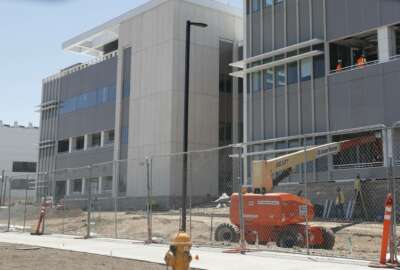It’s practically become a forbidden four-letter word in government, but many House lawmakers say they’re serious about authorizing a BRAC-like commission to realign and close some outdated and vacant medical facilities at the Veterans Affairs Department.
While there’s largely bipartisan consensus VA needs to do something to consolidate and shed hundreds of vacant, underused and crumbling buildings from its inventory, lawmakers, veterans service organizations and others disagree over the details.
The VA Asset and Infrastructure Act, which House Veterans Affairs Committee Chairman Phil Roe (R-Tenn.) formally introduced Thursday, would authorize the VA secretary to develop criteria for making recommendations to change VA facilities. The criteria would get a 30-day public comment period.
Next, a presidentially-appointed 11-member commission would use the secretary’s criteria to develop its own recommendations for modernizing and realigning VA medical facilities, the legislation said. The commission must negotiate its recommendations with the VA secretary. The final report would go to the president for his approval and then to Congress.
Unless Congress disagrees and submits a formal, joint resolution expressing its disapproval, VA must begin implementing the commission’s recommendations.
“Most concerning to me, and I say this now, I would say it in four years and I would say it in eight years, is the power of the president at the end of the process,” House VA Committee Ranking Member Tim Walz (D-Minn.) said during Thursday’s hearing. “If he or she disapproves of the recommendations, the commission ends without further action.”
The bill is still a draft, and Roe acknowledged the concerns that some committee members and veterans service organizations have with the makeup of the commission and the process for implementing its recommendations.
“I don’t think we’re there yet,” Walz said. “As the legislation’s written, it takes a picture snapshot of VA infrastructure and mak[ing] a decision on going forward on that is going to have decades-long impact. We need more than a snapshot. We need to develop a process that VA can use to continually make decisions on an annual basis to ensure access gaps are identified and filled early.”
Veterans service organizations are largely concerned about the makeup of the presidentially-appointed commission and fear the legislative language sets up the potential for a “runaway committee” to implement decisions with little debate.
Veterans who currently use the VA health system should be a part of the commission, the VSOs said.
Timing is another issue. The House committee is about three weeks away from debating the next iteration of the Veterans Choice Program, which is expected to streamline VA’s various community care programs and eliminate arbitrary administrative rules for veterans who want access to privates sector providers.
“We could have a reasonable debate over whether we’re putting the cart before the horse or not,” Carl Blake, associate executive director of government relations for Paralyzed Veterans of Americans, said. “We take the position that we should know what the VA plans to do in terms of delivering care before we then decide what it’s footprint is going to look like.”
The draft legislation also gives VA stakeholders about one year to finish market analysis of the veteran population and VA’s current facilities and health specialties, which VSOs fear is too little time.
“I agree the timeline we have may not be right,” Rep. Brad Wenstrup (R-Ohio) said. “This is big and this is challenging, so it may not be right. But it’s a matter of looking at what we have and what we don’t have, what we need and what we don’t need. That’s really what this is all about, and it’s based, really, on current markets and future markets. … When it comes to that, I don’t consider this to be like a BRAC. We’re not going to relocate people.”
VA medical facilities are, on average, 60 years old — five times older than most non-profit hospital buildings. They were designed to handle the influx of injured World War II and Korean War veterans in the 1940s and 1950s.
Commission or not, VA Secretary David Shulkin has said the department wants to dispose of, consolidate or sell more than 1,100 outdated, underutilized and vacant facilities within the next two years.
It’s already begun the process of disposing of or reselling 142 of those buildings now. The department has about 430 vacant or nearly empty buildings that are more than 60 years old, which cost VA about $7 million a year to maintain.
Facility consolidation was one of 13 areas of focus for Shulkin when he described the “state of VA” in May.
Copyright
© 2024 Federal News Network. All rights reserved. This website is not intended for users located within the European Economic Area.

